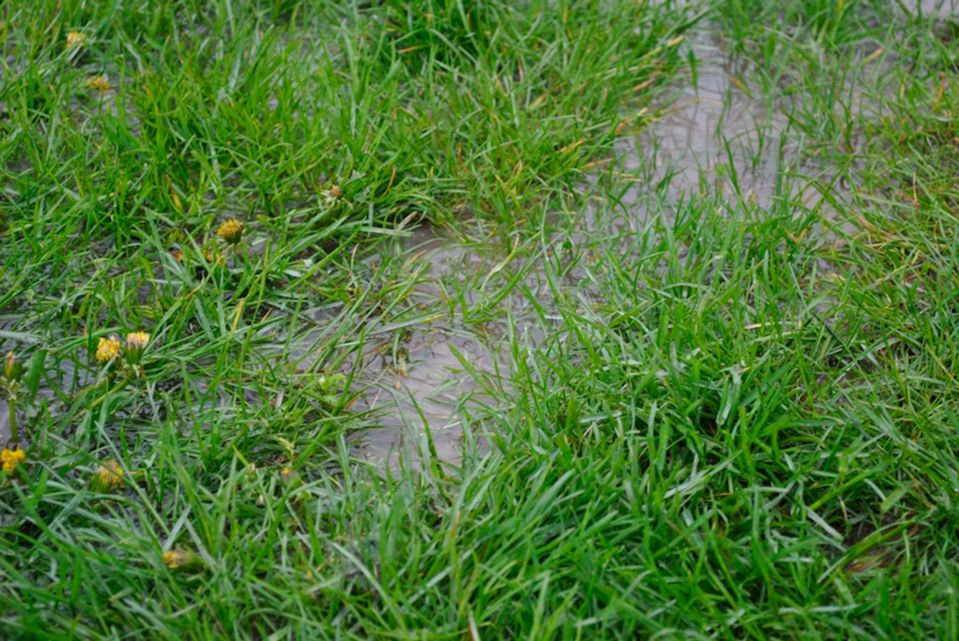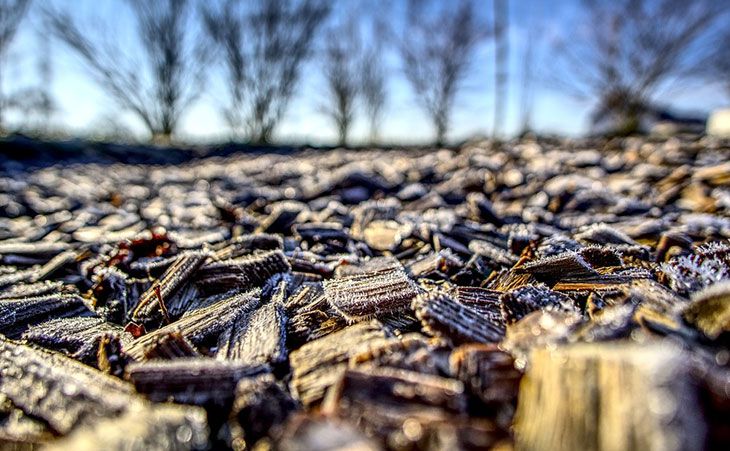Growing Organic Fruit Trees

The easiest way to avoid tree-health issues when growing organic fruit trees is prevention, and an ideal planting site is the best place to start.
Although there are several ways to grow fruit organically, organic fruit growers share this concept: don't expect "perfect-looking" fruit! The photo on the left is of organically grown Jonathan apples. Grocery stores know that the average consumer likes what they consider to be perfect-looking fruit, which is often what is stocked on produce shelves at the expense of flavor and nutrients, so don't let a few spots and bumps bother you.
Some gardeners avoid growing fruit trees because of the misconception that many chemicals are needed just to keep the fruit pest- and disease-free. Quite the opposite is true! There are means of growing organic fruit trees – like natural/organic pest and disease control sprays – effective and safe to use around people, pets, and the environment. There are also methods to practice that help you grow healthy and productive fruit trees. Just like with people, the easiest way to avoid health issues in fruit trees is prevention, and an ideal planting site is the best place to start.
Tips to creating a healthy environment for your fruit trees:


- Research before you plant, and be sure to choose varieties that are recommended for your zone. Choose disease-resistant varieties when possible. Read about choosing the right place to plant your trees.
- Don't grow anything from the genus Juniperus (which includes Eastern red-cedar) near apple trees, or you risk dealing with cedar-apple rust.
- Test the soil. Do a soil composition and pH test* so you know which nutrients are lacking and treat accordingly. Most fruit trees favor a neutral soil pH between 6.0 - 7.0. Improper soil pH can translate to nutrient deficiencies, so condition as needed if the soil is too acidic or too alkaline for your fruit trees. Healthy soil equates to healthy trees. Poor, lacking soil puts undue stress on fruit trees, which makes them more susceptible to problems.
- Well-drained locations are critical. Low sites that retain water are the prime instigator of fungal diseases and molds, which cause issues like phytophthora and other root rots. Read more in our article, Plan Ahead for Rainy Weather.
- Soil quality. The percentage of organic matter in the soil will also determine its ultimate drainage and ability to retain water when needed. To check yours, remove four inches of the soil and place in a one-quart jar with a lid. Fill the jar with water and screw on the lid. Shake well, then let the jar stand for 24 hours. The soil will settle into layers: good loam will have about 1.75 inch (45%) of sand on the bottom, then about 1 inch (25%) of silt, then about 1 inch (25%) of clay and about 1/4 inch (5%) of organic matter on top. Read more about the "Jar Test".
- Prune to remove dead/diseased branches, leaves, and twigs from existing trees as soon as you spot them. Dispose of the debris far away from the trees to avoid re-contamination of any diseases. Avoid composting potentially diseased leaves or debris.
* Your local county cooperative extension is a highly recommended resource for soil tests (pH and composition), as well as identifying pest and disease issues common in your location.
If your tree develops a disease, properly identify it so you know what to do:

Here is a useful resource to help identify common issues » Diagnostic Guide to Common Home Orchard Diseases (from UGA)
Once you've identified the problem, you can address it.
Basic organic pest and disease control for fruit trees:
- Apply an organic fungicide around the time your tree's leaves are half grown-out. This product is also an exceptional soil conditioner. It combines Actinovate (a professional biological fungicide) with organic iron and humates (a super-compost/soil conditioner that does wonders for your dirt). This helps to control root rot, including verticillium wilt and dollarspot. OMRI-certified organic.
- Monterey Complete Disease Control is a safe, organic, biofungicide control that can be applied the day up to harvest. A good solution for dwarf fruit trees.
- Insecticidal Soap is the thing to use as on-contact control of aphids, lace bugs, mealy bugs, mites, grasshoppers, leafhoppers, scale insects, plant bugs, sawfly larvae (pear slugs), psyllids, tent caterpillars, thrips, spider mites, earwigs and whitefly. May be used up to day of harvest. Alternatively, you can also choose to use Neem Oil.
You may also try Kaolin clay, a natural mineral that creates a physical barrier between leaves and fruit, and bugs and fungus. There is some dispute in the orchard-growers’ community about the effectiveness, but many organic tree growers have been happy with the results. Your trees may look a little unusual as the clay solution dries, but it will repel insects (mites, thrips, grasshoppers, flea beetles, Japanese beetles) and guard against some fungal diseases. Spray with the manufacturer’s recommended amount at petal fall. You may find Kaolin clay products at your local garden center or garden supply store.
Growing organic fruit trees is possible and gives you the peace of mind of knowing exactly what you're eating! Explore and find advice about caring for fruit trees elsewhere in our Growing Guide.
Interested in learning more?
Read '5 Reasons Not To Grow Fruit – And Why They're Wrong' from Growing a Greener World.








